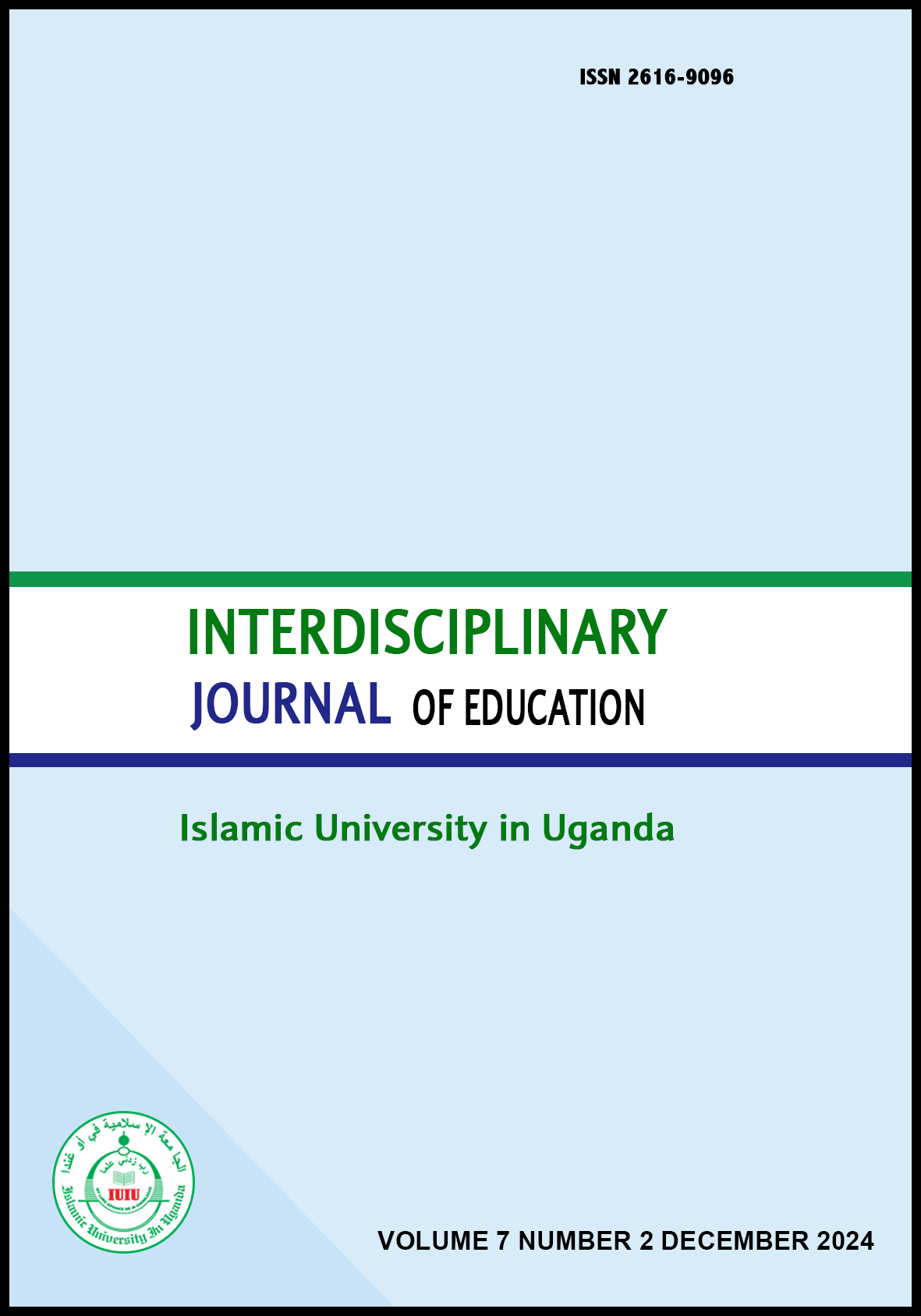An Interactive Approach of Teaching and Learning Prerequisite Mathematics Course and Core Engineering Mathematics Course During COVID-19 Pandemic
DOI:
https://doi.org/10.53449/ije.v7i2.659Keywords:
COVID-19, engineering, interaction, prerequisite mathematics, learning, teachingAbstract
The emergence of COVID-19 brought up some concerns and changes in the approaches to the teaching and learning of some engineering related modules, particularly in South Africa. Therefore, the teaching of an electronics engineering course demands a balanced interactive approach, as requested by the curriculum. On this note, this paper reports the common approaches of teaching and learning mathematical modelling in antenna theory and design. It also discusses the perceived impact of interactive learning on modelling some mathematical skills in engineering education. It emphasizes the form of interaction that exists among students and lecturer, lecturer and students, and the whole class with the lecturer. The paper therefore reports the strategies of teaching and learning of mathematical modelling in Antenna Theory and Design (ATD), using the interactive methods, as suggested by the University during COVID-19 period. In view of this, the paper confirms that the adoption of an interactive teaching and learning method helps to increase students’ understanding when learning ATD. In achieving the goal of the study, a qualitative style of data collection was adopted, coupled with a thematic approach of discussion of the study. This gives room for the appropriate approach of teaching and learning of mathematical modelling, in ATD courses, during COVID-19 era in a university in South Africa.Downloads
References
Ärlebäck, J.B., & Frejd, P. (2010). First results from a study investigating Swedish upper secondary students' mathematical modelling competencies. Paper presented at the EIMI 2010 Conference, 19-23 April 2010, Lisbon, Portugal.
Adedoyin, O. B., & Soykan, E. (2023). Covid-19 pandemic and online learning: the challenges and opportunities. Interactive learning environments, 31(2), 863-875. https://doi.org/10.1080/10494820.2020.1813180
Bates, A. W. (2020). Advice to those about to teach online because of the corona-virus. eduq.info
Blomhøj, M., & Carreira, S. (Eds.) (2009). Mathematical applications and modelling in the teaching andlearning of mathematics: Proceedings from Topic Study Group 21 at the 11th International Congress on Mathematical ducation in Monterrey, Mexico, July 6-13, 2008. Roskilde Universitet. IMFUFA-tekst : i, om og med matematik og fysik No. 461.
Bower, M., Lai, J. W., Van Bergen, P., Hobson, L., & Stephens, R. (2023). ‘Lockdown’learning designs–Parent preferences towards remote and online learning for their children during the COVID-19 pandemic. Australian Journal of Education, DOI: 10.1177/00049441231204069
Cai, J., LaRochelle, R., Hwang, S., & Kaiser, G. (2022). Expert and preservice secondary teachers’ competencies for noticing student thinking about modelling. Educational Studies in Mathematics, 109(2), 431-453. https://doi.org/10.1007/s10649-021-10071-y
Creswell, J. W., & Poth, C. N. (2018). Qualitative inquiry and research design: Choosing among five approaches. Sage publications.
Dubey, U. K. B., & Kothari, D. P. (2022). Research Methodology: Techniques and Trends. Chapman and Hall/CRC. https://doi.org/10.1201/9781315167138.
Fasinu, V. G., Govender, N., & Kumar, P. (2023). An empirically-based practical-realistic pedagogic mathematical model for teaching and learning of an antenna theory and design course. EURASIA Journal of Mathematics, Science and Technology Education, 19(1), em2207.
Fasinu, V. G. (2021). Engineering academics’ teaching and students’ learning of mathematical modelling approaches in antenna design course [PhD thesis, University of KwaZulu-Natal].
Gallegos, R. R. (2009). Differential equations as a tool for mathematical modelling in physics and mathematics courses—A study of high school textbooks and the modelling processes of senior high students. Mathematical applications and modelling in the teaching and learning of mathematics,1.
Kaiser, G., Blömeke, S., König, J., Busse, A., Döhrmann, M., & Hoth, J. (2017). Professional competencies of (prospective) mathematics teachers—Cognitive versus situated approaches. Educational Studies in Mathematics, 94, 161-182. https://doi.org/10.1007/s10649-016-9713-8
Karakaya, K. (2021). Design considerations in emergency remote teaching during the COVID-19 pandemic: A human-centered approach. Educational Technology Research and Development, 69(1), 295-299.
Kumari, S. K. V., Lavanya, K., Vidhya, V., Premila, G. A. D. J. S., & Lawrence, B. (2023). Research Methodology (Vol. 1). Darshan Publishers.
Lingefjärd, T. (2000). Mathematical modeling by prospective teachers. [Electronically published doctoral dissertation, University of Georgia]. http://ma-serv.did.gu.se/matematik/thomas.htm
Larrain, M., & Kaiser, G. (2022). Interpretation of students’ errors as part of the diagnostic competence of pre-service primary school teachers. Journal für Mathematik-Didaktik, 43(1), 39-66. https://doi.org/10.1007/s13138-022-00198-7
Rapanta, C., Botturi, L., Goodyear, P., Guàrdia, L., & Koole, M. (2020). Online university teaching during and after the Covid-19 crisis: Refocusing teacher presence and learning activity. Postdigital science and education, 2, 923-945. https://doi.org/10.1007/s42438-020-00155-y
Hodges, C. B., & Fowler, D. J. (2020). The covid-19 crisis and faculty members in higher education: from emergency remote teaching to better teaching through reflection. International Journal of Multidisciplinary Perspectives in Higher Education, 5(1), 118-122.
Hoth, J., Döhrmann, M., Kaiser, G., Busse, A., König, J., & Blömeke, S. (2016). Diagnostic competence of primary school mathematics teachers during classroom situations. ZDM, 48, 41-53. https://doi.org/10.1007/s11858-016-0759-y
Mohammed, M. I. (2019). Efficacy of antenna engineering research orientation among graduate students at Mekelle University Ethiopian Institute of Technology. The International Journal of Electrical Engineering & Education, 56(3), 222-237. http://dx.doi.org/10.1177/0020720918796702
Soliman, H. Y. (2019). Methodology of Teaching and Learning Antenna Theory at Port Said University. Paper presented at the 2019 IEEE Global Engineering Education Conference (EDUCON).
Redish, E. F., & Smith, K. A. (2008). Looking beyond content: Skill development for engineers. Journal of engineering education, 97(3), 295-307. Https://doi.org/10.1002/j.2168-9830.2008.tb00980.x
Vanourek, G. (2020). Schooling COVID-19: Lessons from Leading Charter Networks from their transition to remote learning. Thomas B. Fordham Institute.
Vorhölter, K., Kaiser, G., & Ferri, R. B. (2014). Modelling in mathematics classroom instruction: An innovative approach for transforming mathematics education. In Transforming mathematics instruction (pp. 21-36): Springer. https://doi.org/10.1007/978-3-319-04993-9_3
Yan, X., Marmur, O., & Zazkis, R. (2022). Advanced mathematics for secondary school teachers: Mathematicians’ perspective. International Journal of Science and Mathematics Education, 20(3), 553-573. https://doi.org/10.1007/s10763-020-10146-x
Yates, A., Starkey, L., Egerton, B., & Flueggen, F. (2021). High school students’ experience of online learning during Covid-19: the influence of technology and pedagogy. Technology, Pedagogy and Education, 30(1), 59-73. Doi=10.1080/1475939X.2020.1854337
Downloads
Published
Issue
Section
License
Copyright (c) 2024 Vojo George Fasinu

This work is licensed under a Creative Commons Attribution-NoDerivatives 4.0 International License.








